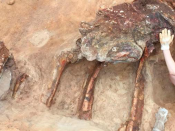Por Cristian Pérez‐Granados (Ecology Department, Alicante University, Spain) e Julia Gómez‐Catasús (Ecology Department, Autonomous University of Madrid, Spain).
Passive acoustic monitoring has changed the way of monitoring several bird species. However, it is needed to measure a reliable vocal activity rate from sound recordings (number of sounds per unit area and unit time) to estimate accurate population sizes (i.e. cue counting method) or population trends (i.e. temporal variation of the detected vocal activity rate). In this talk, we will explain some of the methods available for estimating reliable bird vocal activity rate from sound recordings, at individual (i.e. how long individuals need to be monitored) and at population level (number of individuals to record or number of recording days required). First, we will provide a short overview about why we need to estimate a reliable measure of bird vocal activity rate, and then we will explain a few examples about how to do that using mainly the threatened Dupont’s Lark (Chersophilus duponti) as model species, but also with a few examples using Neotropical birds as target species, such as the White‐tipped dove (Leptotila verreauxi), the Little nightjar (Setopagis parvula) orthe Greater Rhea (Rhea americana).
Transmissão em direto via Zoom (password: 805991).




















